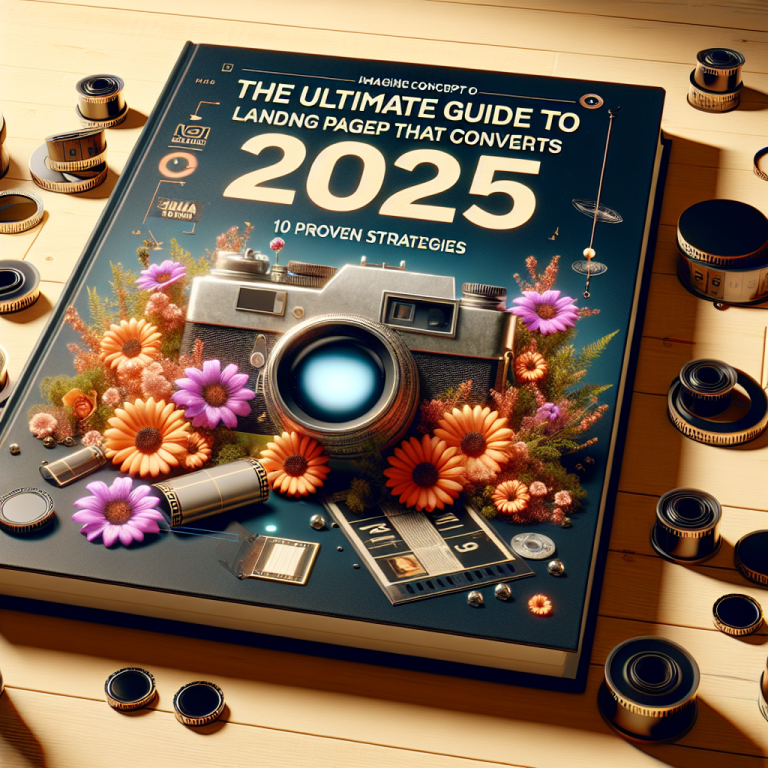The Ultimate Guide to ad copywriting best practices in 2025: 10 Effective Tips to Boost Results
Welcome to **the ultimate guide to ad copywriting best practices in 2025**! Whether you’re a seasoned marketer or just getting started, mastering how to craft persuasive, effective ad copy is critical for success. In this guide, we explore 10 of the most impactful tips to elevate your advertising game this year. You’ll discover real-world examples, practical strategies, and the latest trends to ensure your ads stand out and drive results. Let’s dive into these proven *ad copywriting best practices* that will boost your conversion rates and ROI in 2025!
1. Headline Hacks for Maximum Impact
Crafting Click-Worthy Headlines
Your headline is the first impression your ad makesâif it doesnât catch attention immediately, your audience won’t read further. In 2025, headlines that promise a benefit or create curiosity are proven to outperform generic statements. For example, instead of saying “Improve Your Business,” use “Boost Your Sales by 30% in Just 30 Days.” Think about what your audience values most and craft headlines that promise real solutions or enticing surprises.
Use numbers, powerful words, and clear language to make your headline stand out. Testing different headline versions through A/B testing can help identify what resonates best with your target audience. Remember, the goal is to hook the viewer instantly, so invest time in fine-tuning this critical first element.
Common Headline Mistakes to Avoid
Avoid vague or overly complex headlines that don’t communicate value quickly. Long headlines tend to get cut off on mobile devices, so keep it concise. Also, steer clear of clickbait tactics that can damage your brand credibility.
2. Understanding Your Audience Deeply
Research and Persona Development
Knowing who you’re speaking to is essential for all *ad copywriting best practices*. In 2025, advanced data analytics and AI tools make audience research more precise than ever. Create detailed customer personas that include demographic info, pain points, motivations, and preferences. When you understand your audienceâs language and desires, your ad copy becomes more relevant and persuasive.
Experiment with different messaging angles tailored to various segments. For instance, younger audiences might respond better to playful, energetic language, while professionals might prefer a straightforward, benefit-driven tone. Validating these insights through surveys or feedback can sharpen your messaging further.
Using Data to Personalize Ads
Leveraging data enables personalization that speaks directly to individual needs. Dynamic ad creative that adapts content based on user behavior increases engagement. For example, retargeting campaigns presenting products or offers aligned with prior browsing history show higher conversion rates.
3. Crafting a Strong Value Proposition
Highlighting Unique Benefits
Your value proposition should clearly articulate what sets your product or service apart. In 2025, consumers are bombarded with advertisements, so your copy must cut through the noise with clear, undeniable benefits. Use concise language to define exactly how your offering improves their lives.
For example, instead of saying “We offer the best software,” say “Our software increases your team’s productivity by 40%âguaranteed.” Be specific, credible, and customer-focused. This will help your audience quickly understand what’s in it for them.
Aligning with Customer Needs
Ensure your value proposition speaks directly to your audience’s primary pain points or desires. Conduct surveys or social listening to grasp what motivates your target market. Continuously refine your messaging based on feedback and changing trends to stay relevant.
4. Leveraging Emotional Appeals
The Power of Emotion in Ad Copy
Research shows that decisions are often driven by emotion rather than logic. Effective *ad copywriting best practices* in 2025 harness emotional appeals to foster connection and trust. Storytelling, humor, and empathy are powerful tools to evoke feelings that motivate action.
For instance, ads that tell a compelling story about how a product transformed a customer’s life resonate more deeply than purely informational ads. Use language that taps into hopes, fears, or aspirationâthese are universal motivators.
Building Trust and Credibility
Authenticity matters. Incorporate testimonials, case studies, and endorsements to add social proof. When your audience sees real stories and genuine feedback, theyâre more likely to trust your offering. Combining emotional appeal with factual credibility creates a powerful, persuasive mix.
5. Clarity and Conciseness Matter
Simplifying Your Message
In todayâs fast-paced digital world, clarity is king. Your ad copy should communicate the core message in as few words as possible. Avoid jargon or ambiguous statements that confuse prospects. Clear, direct language leads to better comprehension and higher conversions.
Test different versions of your copy to see which is easiest to understand. Use bullet points or highlight key benefits to make scanning easier. Remember, a cluttered message dilutes your impact.
Breaking Down Complex Ideas
If your product or service is complex, simplify your explanation through analogies or metaphors. Use visuals combined with straightforward copy to make abstract concepts tangible. This approach ensures your audience grasps your value quickly and accurately.
6. Integrating Visual Elements Effectively
Complementing Copy with Imagery
Visuals are a crucial part of *ad copywriting best practices*. An image or video can reinforce your message and evoke emotions faster than text alone. Select visuals that align with your message and appeal to your target audience.
For example, a fitness brand might showcase real users achieving their goals rather than stock photos, adding authenticity. Use high-quality images with optimized alt text that includes your primary keywords for better SEO.
Using Color and Design to Enhance Persuasion
Colors influence perceptions and behaviors. Bright colors like red evoke urgency, while blue conveys trust. Consistent branding and appealing design help create harmony between your copy and visuals, increasing memorability and engagement.
7. Optimizing Call-to-Action (CTA)
Crafting Compelling CTAs
Your CTA guides the audience toward the desired action. Use action-oriented, urgent language like “Get Started Today” or “Claim Your Free Trial.” Make the CTA prominent and easy to find within your ad.
Test different phrases, colors, and placements to find what converts best. Your CTA should reflect the adâs promise and create a sense of urgency or benefit.
Aligning CTA with User Intent
Ensure your CTA aligns with where the user is in the buying journey. For new visitors, offers like “Learn More” work well. For ready-to-buy customers, use “Buy Now” or “Schedule a Demo.” This strategic alignment improves the chances of conversion.
8. Testing and Analytics Are Key
Continuous Improvement with Data
Use analytics tools to monitor ad performance constantly. Track metrics like click-through rate (CTR), conversion rate, and cost-per-acquisition (CPA). Regularly testing elements such as headlines, visuals, and CTAs helps refine your *ad copywriting best practices*.
Implement A/B testing for different versions of your ad copy to see what resonates best. Data-driven decisions lead to higher effectiveness and ROI.
Adjusting Based on Feedback
Gather feedback from user interactions and customer surveys to understand what’s working and what isn’t. Adjust your language, offers, and visuals accordingly. Staying flexible is essential to maintaining relevance in 2025’s competitive landscape.
9. Legal and Ethical Best Practices
Compliance with Advertising Laws
Adhere to all relevant advertising regulations, including truth-in-advertising standards. Misleading claims can lead to penalties and damage your reputation. Always verify your facts and provide transparent information.
Respecting Privacy and Consumer Rights
In 2025, privacy concerns are more prominent than ever. Follow data protection laws like GDPR or CCPA. Ensure your targeting and data collection methods are ethical and transparent to build trust with your audience.
10. Staying Ahead with Trends & Continuous Learning
Adapting to 2025 Trends
Keep up with the latest trends in AI, voice search, and interactive content that are reshaping the advertising landscape. Incorporate new formats like AR ads or personalized video content to stay innovative and relevant.
Investing in Skill Development
Regularly update your skills through webinars, courses, and industry blogs focused on *ad copywriting best practices*. The digital environment evolves fast, and continuous learning ensures your copy remains effective and compliant with emerging standards.
Conclusion
Mastering **ad copywriting best practices** in 2025 is essential for creating compelling advertising that resonates, converts, and drives growth. From crafting irresistible headlines to using data strategically, these tips serve as a comprehensive roadmap for marketers aiming to excel this year. By focusing on authenticity, clarity, emotional connection, and continual optimization, you can unlock higher engagement and ROI. Remember, staying adaptable and informed will keep you ahead of the competition, ensuring your ad copy remains powerful and persuasive in 2025 and beyond.
Frequently Asked Questions
1. What are the most important ad copywriting best practices in 2025?
The most important best practices include understanding your audience, creating compelling headlines, clear messaging, emotional appeals, and continuous testing and optimization.
2. How can I improve my ad copy for better results in 2025?
Focus on personalization through data, leverage visuals effectively, craft strong CTAs, and stay updated on current trends and regulations to improve your ad performance.
3. Why is understanding your audience crucial in ad copywriting?
Knowing your audience allows you to tailor your message to their needs, preferences, and pain points, making your ads more relevant and persuasive, ultimately driving higher conversions.
4. How do I stay compliant with legal standards when creating ad copy?
Ensure honesty in your claims, respect user privacy, and adhere to advertising laws like FTC guidelines and data protection regulations. Regularly review your copy for compliance.
5. What are some emerging trends in ad copywriting for 2025?
Emerging trends include AI-powered personalization, voice-activated ads, interactive content, and augmented reality experiences, all aimed at enhancing engagement and effectiveness.








